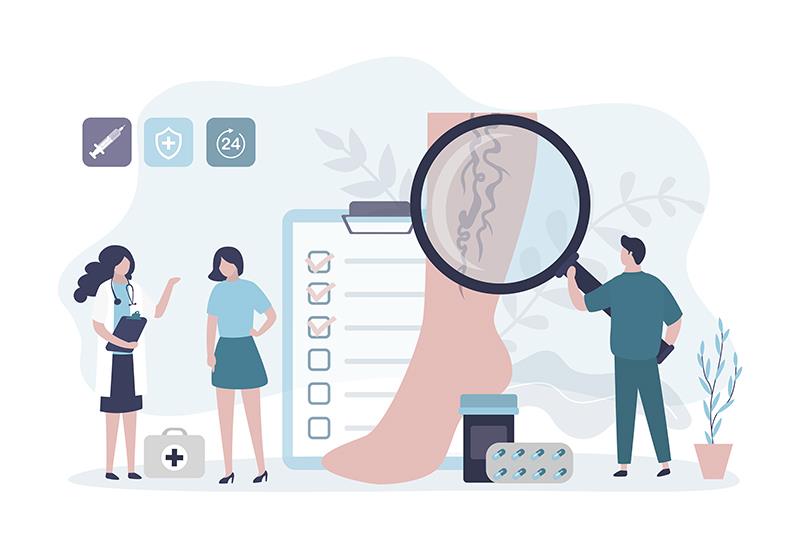Cold sensitivity, heavy legs may be valuable for diagnosing varicose veins





The often-overlooked symptoms of hypersensitivity to cold and heaviness in the lower extremities appear vital in diagnosing varicose veins, especially in the absence of arterial disorders, according to a large study.
Analysis of data on 8,782 adults sourced from the Taiwan Biobank showed significant associations between varicose veins, cold hypersensitivity, and heavy legs (p<0.0001). Individuals with moderate or severe cold hypersensitivity had increased odds of varicose veins compared with those who had no cold hypersensitivity (moderate: odds ratio [OR], 1.490, 95 percent confidence interval [CI], 1.205–1.842; p=0.0002; severe: OR, 1.894, 95 percent CI, 1.546–2.320; p<0.0001). [Open Heart 2025;12:e002909]
Likewise, individuals with vs without heavy legs had more than fourfold greater odds of varicose veins (OR, 4.239, 95 percent CI, 3.381–5.315; p<0.0001).
“Of note is the significance of the concurrent symptoms of heaviness and cold feet (p=0.0009),” the authors said. “When these symptoms coexist, the likelihood of confirming the presence of varicose veins is notably amplified compared with individuals without such symptoms.”
Individuals with heavy legs and severe cold hypersensitivity had sevenfold greater odds of varicose veins compared with those who had none of these symptoms (OR, 7.135, 95 percent CI, 4.980–10.221; p<0.0001).
Meanwhile, the combination of heavy legs and moderate cold hypersensitivity increased the odds of varicose veins by more than threefold (OR, 3.583, 95 percent CI, 2.121–6.053; p<0.0001), while heavy legs alone increased the odds by more than sixfold (OR, 6.879, 95 percent CI, 5.041–9.387; p<0.0001). The presence of only severe cold hypersensitivity (OR, 2.183, 95 percent CI, 1.743–2.734; p<0.0001) or only moderate cold hypersensitivity (OR, 1.799, 95 percent CI, 1.434–2.258; p<0.0001) was also associated with significantly greater odds of varicose veins relative to the absence of both cold hypersensitivity and heavy legs.
“To date, no direct empirical evidence or animal studies have been conducted to elucidate the specific relationships of symptom and disease, so our study provides novel findings,” the authors said. “Healthcare providers frequently underestimate the gravity and implications of varicose veins, leading to their neglect, and there is usually a gap in understanding the comprehensive spectrum of linked symptoms.”
The present data suggest that self-reported symptom assessment focusing on the leg, including cold hypersensitivity and heavy legs, can be a simple and practical method to support the timely detection of varicose veins, facilitate treatment, and ultimately improve patients’ quality of life, they added.
Of the adults included in the analysis, 1,359 had severe cold hypersensitivity (mean age 46.14 years, 73.14 percent female), 1,535 had moderate cold hypersensitivity (mean age 46.81 years, 61.17 percent female), and 5,888 had no cold hypersensitivity (mean age 50.01 years, 52.89 percent female).
Across the respective severe, moderate, and no cold hypersensitivity groups, 14.13 percent, 9.38 percent, and 5.77 percent of individuals had varicose veins (p<0.0001), while 14.13 percent, 7.36 percent, and 4.74 percent had heavy legs (p<0.0001).